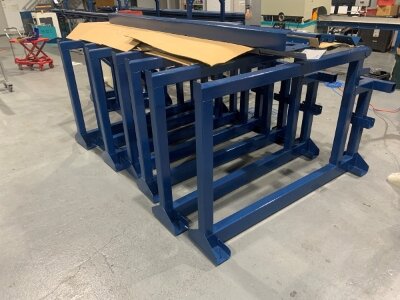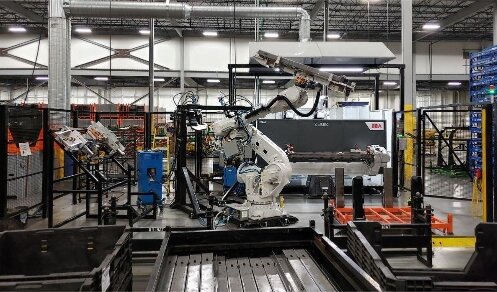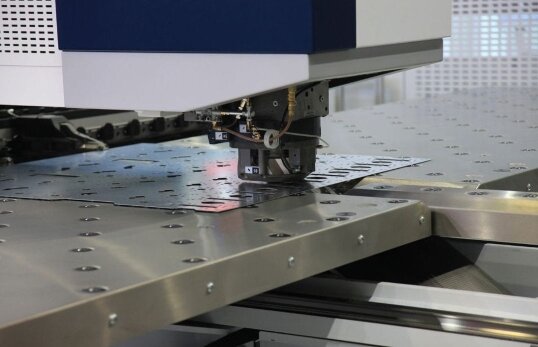금속 부품을 접합하는 방식은 판금 제작에서 매우 중요합니다. 올바른 접합이 이루어지지 않으면 아무리 좋은 재료와 디자인이라도 스트레스를 받으면 무너질 수 있습니다. 프로토타입 작업이나 대량 생산을 준비할 때 적절한 접합 기술을 선택하는 것은 큰 차이를 만듭니다. 견고하고 내구성 있는 결과를 얻기 위해 프로젝트에 적합한 조인트를 선택하는 방법을 살펴보세요.
판금 접합부는 금속 제품의 강도와 내구성을 보장하는 데 중요한 역할을 합니다. 인클로저, 캐비닛, 섀시 등 모든 금속 구조물의 기초가 됩니다. 다양한 유형의 접합부와 그 사용 시기를 이해하면 보다 효율적이고 비용 효율적인 디자인을 만들 수 있습니다.
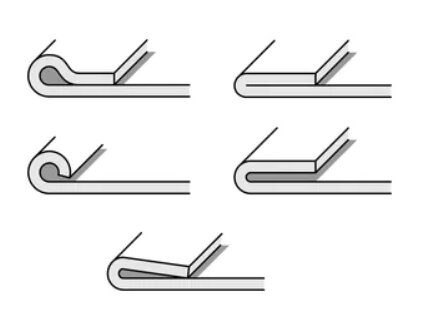
판금 조인트는 무엇인가요?
판금 접합부는 두 개 이상의 판금 조각을 연결하는 연결부입니다. 금속 부품이 단단히 부착되도록 하기 위해 용접, 리벳팅 또는 볼트와 같은 다양한 기술을 사용하여 이러한 접합부를 형성합니다. 선택한 방법은 재료, 디자인 요구 사항 및 원하는 연결 강도에 따라 달라집니다.
판금 접합부는 제조 과정에서 중요한 역할을 합니다. 최종 제품의 강도와 내구성에 직접적인 영향을 미칩니다. 접합부가 제대로 만들어지지 않으면 전체 구조가 약해질 수 있습니다. 이는 제품이 스트레스를 받을 때 고장으로 이어질 수 있습니다. 조인트가 잘 만들어지면 제품이 사용 중에 받는 힘을 견딜 수 있습니다.
일반적인 판금 조인트 유형
다양한 유형의 판금 조인트는 특정 제조 요구 사항에 맞게 설계되었습니다. 가장 일반적인 유형은 다음과 같습니다.
엉덩이 관절
맞대기 접합은 두 개의 금속 조각이 겹치지 않고 가장자리와 가장자리를 맞댈 때 발생합니다. 이러한 접합부는 강도를 제공하기 위해 용접되는 경우가 많습니다. 판금 제작에 사용되는 가장 간단한 접합부 중 하나입니다.
버트 조인트는 강도가 필요한 평평한 표면을 결합하는 데 이상적입니다. 다음에서 사용됩니다. 금속 인클로저, 컨테이너 및 구조용 빔. 주요 장점으로는 단순성, 제작 용이성, 강력한 용접성 등이 있어 고강도 연결에 적합합니다.
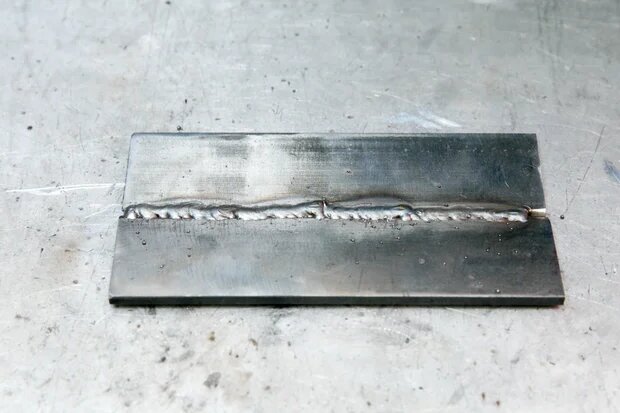
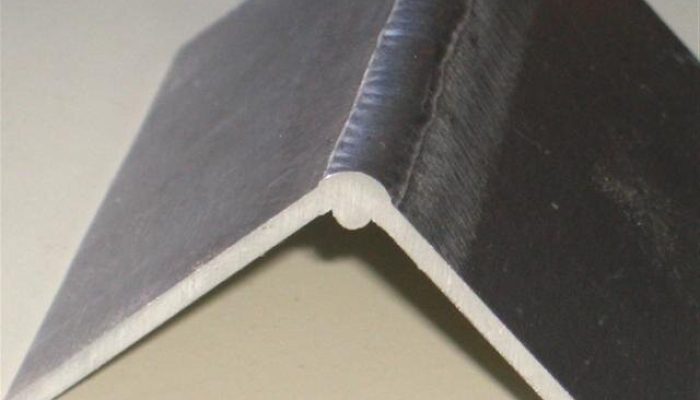
가장자리 관절
엣지 조인트는 두 개의 금속 조각이 가장자리를 따라 결합될 때 발생합니다. 이 유형의 조인트는 간단하지만 강도를 위해 정밀한 정렬이 필요합니다. 접합부의 강도는 용접 또는 리벳팅과 같은 접합 방식에 따라 달라집니다.
엣지 조인트는 판금 패널이나 HVAC 시스템, 지붕 또는 금속 캐비닛과 같이 깨끗하고 평평한 연결이 필요한 모든 용도에 적합합니다. 또한 두꺼운 보강재 없이 얇은 재료를 접합할 때도 유용합니다.
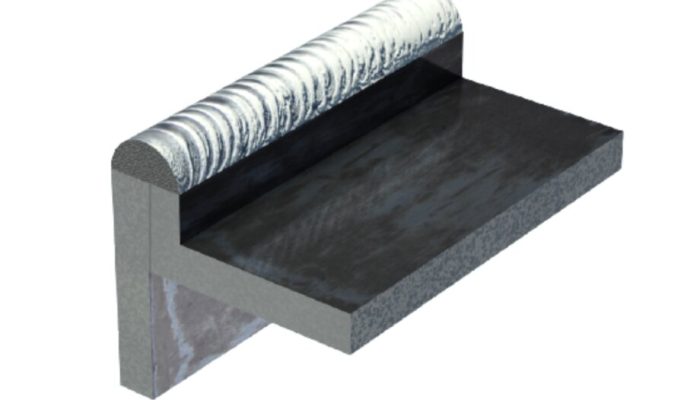
티 조인트
티 조인트는 한 금속 조각을 다른 금속 조각에 수직으로 배치하여 "T"자 모양을 만들 때 형성됩니다. 강도 또는 간단한 연결의 필요성에 따라 맞대기 용접 또는 필렛 용접이 변형될 수 있습니다.
티 조인트는 자동차, 항공우주 및 구조 엔지니어링 산업에서 사용됩니다. 자동차 섀시나 구조적 지지대와 같이 한 부품을 다른 부품의 측면에 부착해야 하는 프레임 구조에서 흔히 사용됩니다.
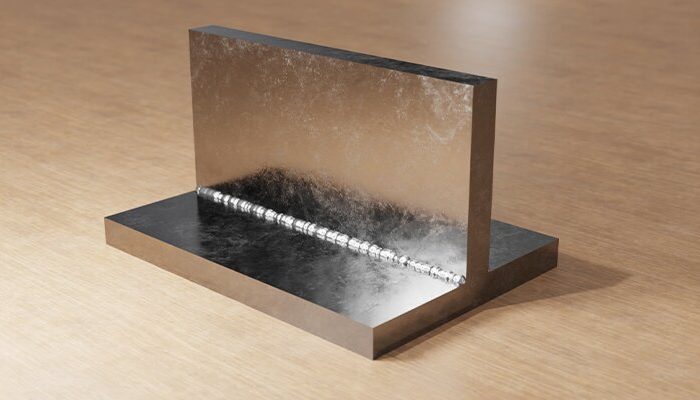
랩조인트
랩 조인트는 한 금속 조각이 다른 금속 조각의 가장자리와 겹칠 때 발생합니다. 이러한 가장자리는 용접, 리벳 또는 볼트로 연결됩니다. 겹침으로 인해 표면적과 강도가 증가하는 얇은 금속을 결합하는 데 자주 사용됩니다.
랩 조인트의 가장 큰 장점은 정확한 모서리 정렬 없이도 강력한 연결을 제공한다는 것입니다. 또한 두께가 다른 재료에도 적합합니다. 그러나 랩 조인트는 버트 조인트나 코너 조인트보다 약할 수 있으며 추가 보강이 필요할 수 있습니다.
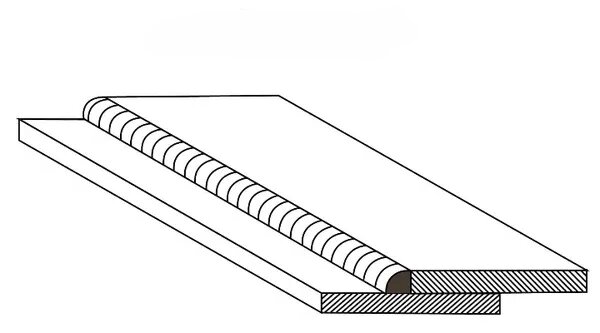
판금 접합 방법
프로젝트와 재료에 따라 다양한 판금 접합 방법이 적합합니다. 각 방법의 장점과 용도를 알면 필요에 가장 적합한 방법을 선택하는 데 도움이 됩니다.
판금 접합을 위한 용접 기술
용접은 판금을 접합하는 가장 일반적인 방법 중 하나입니다. 열을 사용하여 재료를 녹이고 두 개 이상의 조각을 융합합니다. 다음은 널리 사용되는 세 가지 용접 방법입니다.
미그 용접
미그 용접 는 빠르고 다재다능한 방법입니다. 용접 건을 사용하여 전극 와이어를 공급하면 전극 와이어가 녹아 금속 조각을 결합합니다. 얇거나 중간 두께의 금속에 잘 작동하며 강력하고 깨끗한 용접을 만들어냅니다.
TIG 용접
TIG 용접 정밀한 고품질 용접을 제공합니다. 더 얇은 금속에 가장 적합합니다. 이 방법은 비소모성 텅스텐 전극을 사용하여 필러 재료로 채워진 용접 풀을 만듭니다. TIG 용접은 깨끗하고 튼튼하며 보기 좋은 용접으로 유명합니다.
스틱용접
스틱용접또는 차폐 금속 아크 용접(SMAW)은 보다 전통적인 방식입니다. 플럭스로 코팅된 전극을 사용하여 금속을 녹이고 융합합니다. 비용 효율적이고 다용도로 사용할 수 있지만 열 강도가 높기 때문에 주로 두꺼운 재료에 사용됩니다.
리벳팅 및 기계식 체결
리벳팅 그리고 기계식 고정 물리적 패스너를 사용하여 금속 부품을 결합합니다. 이러한 방법은 용접이 적합하지 않거나 부품을 분해해야 할 때 자주 사용됩니다.
리벳팅의 장점
리벳팅은 특히 얇거나 용접하기 어려운 소재에 안정적으로 사용할 수 있습니다. 열이 필요하지 않으므로 뒤틀림의 위험이 적습니다. 또한 리벳을 사용하면 분해가 쉬워 여러 산업 분야에서 유용하게 사용할 수 있습니다.
리벳의 일반적인 응용 분야
리벳은 항공우주, 자동차, 건설 산업에서 널리 사용됩니다. 항공기 구조물, 자동차 차체, 건물용 금속판 등에 사용됩니다. 리벳은 진동과 환경 스트레스에 견딜 수 있는 강력하고 영구적인 연결을 만들어냅니다.
납땜 및 브레이징
둘 다 납땜 및 납땜은 두 금속 부품을 접합하기 위해 충전재를 녹이는 방법입니다. 비슷하지만 사용되는 온도와 기술이 다릅니다.
납땜과 브레이징의 차이점
납땜은 낮은 온도(840°F 또는 450°C 이하)를 사용하여 충전재를 녹이고 부품을 접착하는 방법입니다. 전자제품과 얇은 금속에 자주 사용됩니다. 브레이징은 더 높은 온도(840°F 이상)를 사용하며 더 두꺼운 재료나 더 많은 강도가 필요한 접합부에 가장 적합합니다.
이러한 방법을 선택해야 하는 경우
납땜은 전자제품이나 배관처럼 섬세하거나 정밀한 부품에 적합합니다. 브레이징은 더 강력한 결합이 필요할 때 사용되며 자동차, HVAC 및 중장비 애플리케이션에 이상적입니다.
접착 본딩
접착 본딩은 특수 접착제를 사용하여 열이나 기계적 패스너 없이 금속 부품을 결합하는 방식입니다. 이종 금속을 포함한 다양한 재료를 결합할 때 효과적입니다.
금속 조인트에 사용되는 접착제의 종류
에폭시, 아크릴, 폴리우레탄 기반 접착제를 포함한 다양한 종류의 접착제가 존재합니다. 에폭시는 강한 접착력과 온도 변화에 대한 내성으로 인해 자주 사용됩니다. 아크릴은 빠르게 경화되고 강하기 때문에 또 다른 좋은 선택입니다.
접착 본딩 사용의 이점
접착식 본딩에는 많은 이점이 있습니다. 균일한 응력 분포와 유연성을 제공합니다. 또한 서로 다른 재료를 결합할 수 있어 열에 민감한 부품에 유용할 수 있습니다. 또한 기계식 패스너의 필요성을 줄여 무게와 조립 시간을 절약할 수 있습니다.
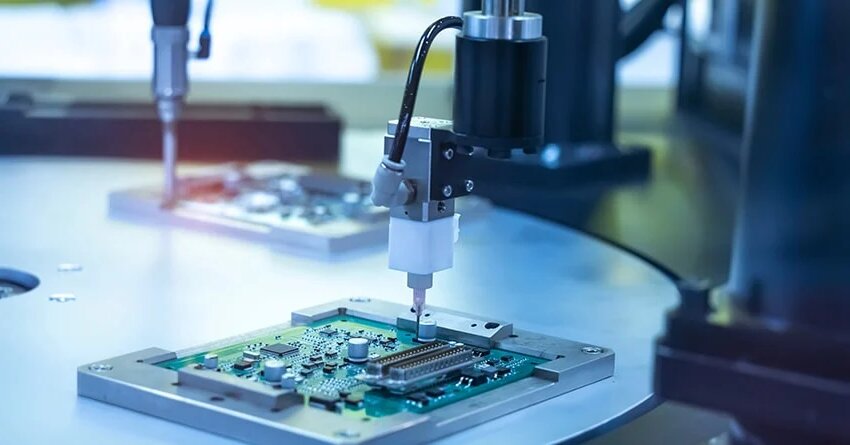
조인트 및 결합 방법 선택에 영향을 미치는 요인
올바른 관절을 고르는 것은 단순히 강도만 중요한 것이 아닙니다. 소재, 디자인, 환경이 모두 중요한 역할을 합니다.
재료 고려 사항
판금 제작에 사용되는 재료는 접합 및 결합 방법의 선택에 큰 영향을 미칩니다.
소재 두께의 영향
재료의 두께와 구성은 용접, 리벳 또는 접착이 얼마나 쉽게 가능한지에 영향을 미칩니다. 재료가 두꺼울수록 MIG 또는 TIG 용접과 같이 더 높은 온도와 에너지 집약적인 방법이 필요할 수 있습니다.
다양한 금속의 호환성
서로 다른 금속을 접합할 때는 서로 얼마나 잘 어울리는지 고려하는 것이 중요합니다. 알루미늄과 강철 같은 금속은 열팽창률과 융점이 서로 다르기 때문에 용접이나 브레이징이 더 어렵습니다. 올바른 필러 재료나 접합 방법을 사용하면 갈바닉 부식이나 약한 결합과 같은 문제를 예방할 수 있습니다.
디자인 고려 사항
조인트 설계와 핏업은 최종 제품이 강도와 기능에 대한 요구 사항을 충족하는 데 필수적인 요소입니다.
관절 구성 및 강도
관절의 디자인은 관절이 처리할 수 있는 하중의 양에 영향을 미칩니다. 예를 들어 맞대기 조인트는 튼튼하지만 더 많은 준비가 필요합니다. 코너 조인트 또는 T 조인트는 각진 연결을 지원하지만 무거운 하중을 처리하려면 추가 보강이 필요할 수 있습니다.
허용 오차 및 핏업
부품의 맞춤과 필요한 공차를 신중하게 고려해야 합니다. 부품이 제대로 맞지 않으면 정렬이 잘못되거나 용접이 약해지거나 틈이 생겨 조인트의 강도가 떨어질 수 있습니다. 정밀한 정렬과 정확한 공차를 보장하는 것은 안정적이고 내구성 있는 조인트를 만드는 데 필수적입니다.
환경 및 서비스 조건
최종 제품이 사용될 환경은 올바른 조인트와 결합 방법을 선택하는 데 중요한 역할을 합니다.
온도 및 내식성
판금 부품이 극한의 온도나 부식성 환경에 노출되는 경우 이러한 조건을 견딜 수 있는 접합 방법을 선택하는 것이 중요합니다. 일부 금속은 저온에서 부서지기 쉬운 반면, 고온이나 산성 환경에서는 성능이 저하될 수 있습니다. 적절한 용접 공정, 코팅 또는 접착제를 사용하면 이러한 조건에서 접합부를 견고하게 유지하는 데 도움이 될 수 있습니다.
기계적 스트레스와 피로
제품이 진동이나 굽힘과 같은 심한 기계적 응력이나 주기적인 하중에 노출될 경우, 접합 방법은 이러한 요소를 처리할 수 있어야 합니다. 용접, 리벳, 볼트는 모두 시간이 지남에 따라 피로를 받을 수 있습니다. 제품이 받게 될 기계적 응력을 이해하면 장기적인 내구성을 위해 적절한 접합 방법을 선택하는 데 도움이 됩니다.
판금 조인트의 응용
판금 접합은 항공우주, 자동차, 건설 등 다양한 산업에서 사용됩니다. 실제 시나리오에서 어떻게 적용되는지 알아보세요:
항공우주
항공우주 산업에서는 정밀하고 견고한 판금 접합부가 매우 중요합니다. 항공기 부품은 응력 하에서 내구성을 보장하기 위해 리벳 또는 용접 접합부를 사용하는 경우가 많습니다.
자동차
자동차 제조에서 판금 접합부는 구조 부품과 차체 패널에 사용됩니다. 접합부의 선택은 차량의 무게, 성능 및 안전에 영향을 미칠 수 있습니다.
건설
판금 접합부는 구조 골조, 지붕 및 HVAC 시스템에 사용됩니다. 설계 및 용도에 따라 강도와 신뢰성을 높이기 위해 일반적으로 용접 또는 볼트 접합이 사용됩니다.
결론
내구성이 뛰어나고 비용 효율적인 제품을 만들기 위해서는 올바른 접합 유형과 기술을 선택하는 것이 중요합니다. 용접, 리벳팅, 볼트 체결 등 선호하는 방식에 따라 강도, 효율성 및 제조 비용과 관련된 최종 결과에 영향을 미칠 수 있습니다. 다양한 유형의 조인트와 그 용도를 이해하면 프로젝트에 가장 적합한 결정을 내리는 데 도움이 됩니다.
신뢰할 수 있는 고품질 판금 제작 서비스를 찾고 있다면 주저하지 말고 문의해 주세요. 문의하기 에 문의하여 필요에 맞는 맞춤형 솔루션을 상담해 보세요.
안녕하세요, 저는 케빈 리입니다

지난 10년 동안 저는 다양한 형태의 판금 제작에 몰두해 왔으며 다양한 워크숍에서 얻은 경험에서 얻은 멋진 통찰력을 이곳에서 공유했습니다.
연락하세요

케빈 리
저는 레이저 절단, 굽힘, 용접 및 표면 처리 기술을 전문으로 하는 판금 제조 분야에서 10년 이상의 전문 경험을 갖고 있습니다. Shengen의 기술 이사로서 저는 복잡한 제조 문제를 해결하고 각 프로젝트에서 혁신과 품질을 주도하는 데 최선을 다하고 있습니다.


